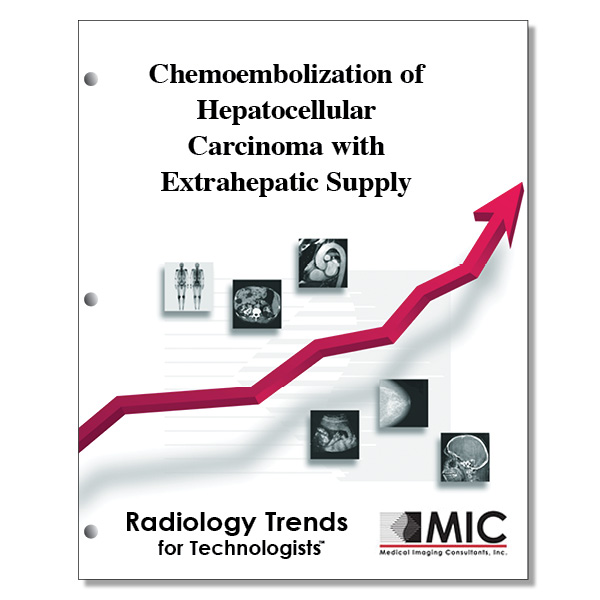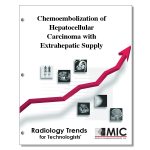

Chemoembolization of Hepatocellular Carcinoma with Extrahepatic Supply
A review of factors that influence the development of extrahepatic collateral arteries, and management of these arteries, in patients with hepatocellular carcinoma.
Course ID: Q00529 Category: Radiology Trends for Technologists Modalities: CT, Vascular Interventional2.0 |
Satisfaction Guarantee |
$24.00
- Targeted CE
- Outline
- Objectives
Targeted CE per ARRT’s Discipline, Category, and Subcategory classification for enrollments starting after January 30, 2024:
[Note: Discipline-specific Targeted CE credits may be less than the total Category A credits approved for this course.]
Computed Tomography: 1.50
Procedures: 1.50
Abdomen and Pelvis: 1.50
Registered Radiologist Assistant: 2.00
Procedures: 2.00
Neurological, Vascular, and Lymphatic Sections: 2.00
Sonography: 1.50
Procedures: 1.50
Abdomen: 1.50
Vascular-Interventional Radiography: 2.00
Procedures: 2.00
Vascular Interventional Procedures: 2.00
Vascular Sonography: 1.50
Procedures: 1.50
Abdominal/Pelvic Vasculature: 1.50
Outline
- Introduction
- Factors Favoring the Development of a Parasitic Blood Supply to HCC
- Predicting the Presence of a Parasitic Blood Supply to HCC
- EHC Arteries Supplying Blood to HCC
- Inferior Phrenic Arteries
- Right IPA
- Left IPA
- Omental Arteries
- Internal Mammary Artery
- Suprarenal Arteries
- Right Renal Artery
- Intercostal Arteries
- Cystic Artery
- Gastric Arteries
- Lumbar Arteries
- Superior Mesenteric Artery
- Gastroduodenal Artery
- Technical Tips
- Conclusion
Objectives
Upon completion of this course, students will:
- recall the individual responsible for the Michels classification system
- document the technical limitations for transarterial chemoembolization
- state the obsolete treatment for hepatocellular carcinoma
- list the main factors influencing the development of EHC arterial supplies to HCC
- list additional factors related to development of EHC arteries
- discuss tumor size and its effect on the development of EHC arterial supply to HCC
- list angiographic findings that strongly suggest an EHC arterial supply
- list factors that should raise suspicion of treatment failure due to the presence of parasitic feeder blood supply to untreated portions of an HCC
- indicate the arteries that can contribute parasitic blood flow to HCC
- know which arteries supply the diaphragm
- explain the anatomy of the inferior phrenic arterial system
- differentiate between the blood supplies to HCCs
- describe how to avoid reflux of agents into the suprarenal and diaphragmatic branches during embolization through the right IPA
- list common complications associated with TACE through the right IPA
- list the branches of the left inferior phrenic artery
- state the technical success rate for TACE performed through the left IPA
- recall the angle from which the omental arteries arise from the right and left gastroepiploic arteries
- explain the best way to angiographically visualize the omental arteries
- choose the best angiographic method for detecting a parasitic HCC supply through the omental arteries
- state the alternative name for the internal mammary artery
- differentiate between sensitivity and accuracy of CT for IMA parasitic blood supply to HCC
- know the blood supply for the adrenal gland
- indicate the origin of the right renal artery
- list the segments of the liver
- state the number of intercostal artery pairs
- express the most common ICA sources of EHC supplies to hepatic tumors
- state the blood supply for the gallbladder
- state the number of lumbar arteries branching from the abdominal aorta
- list the branches of the superior mesenteric artery
- list complications from non-targeted embolization of the gastroduodenal artery
